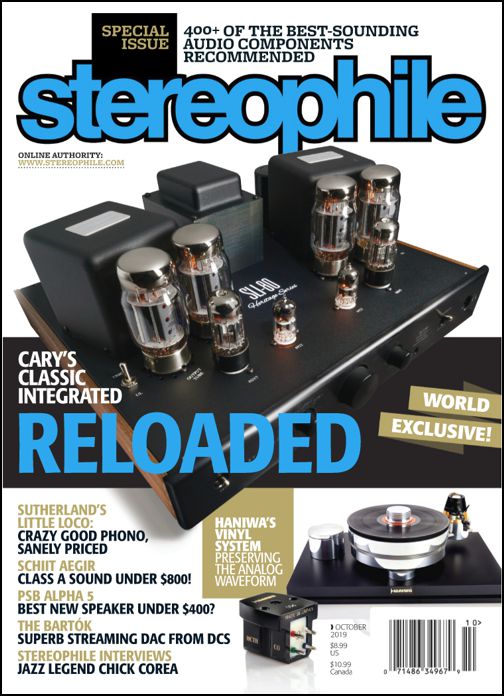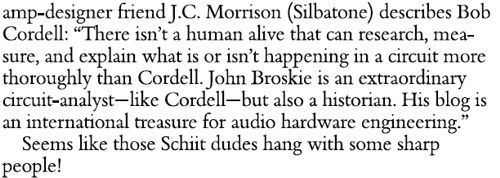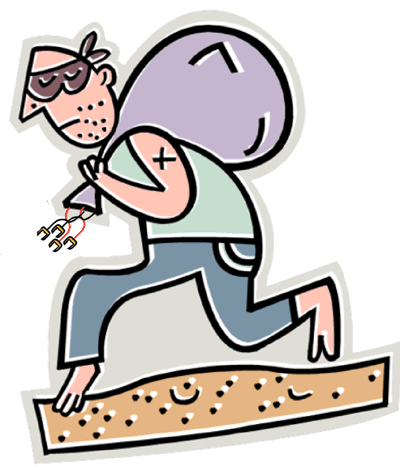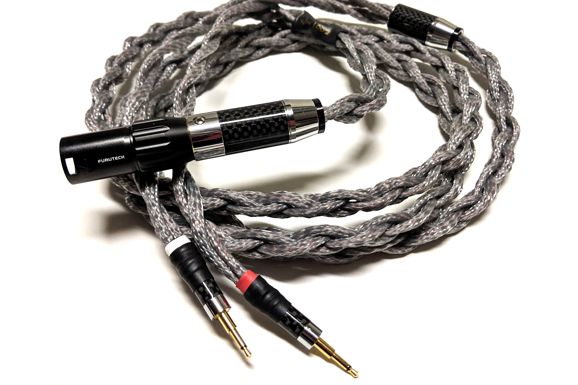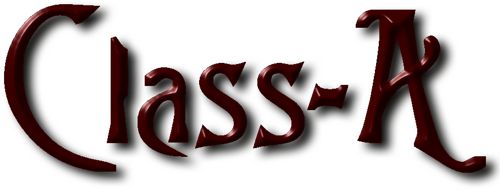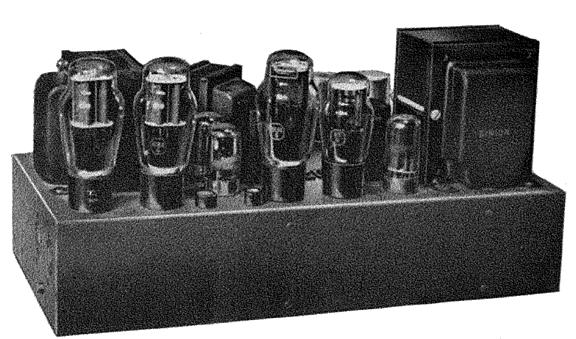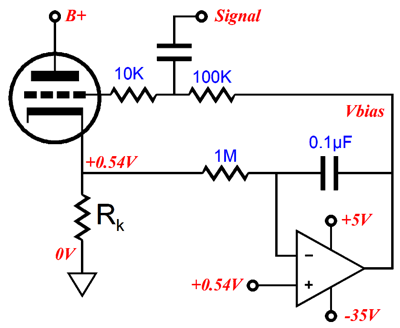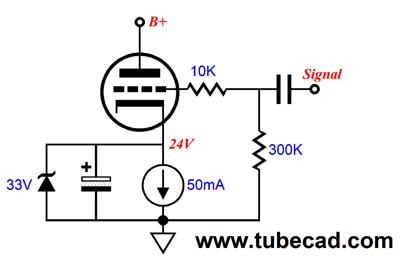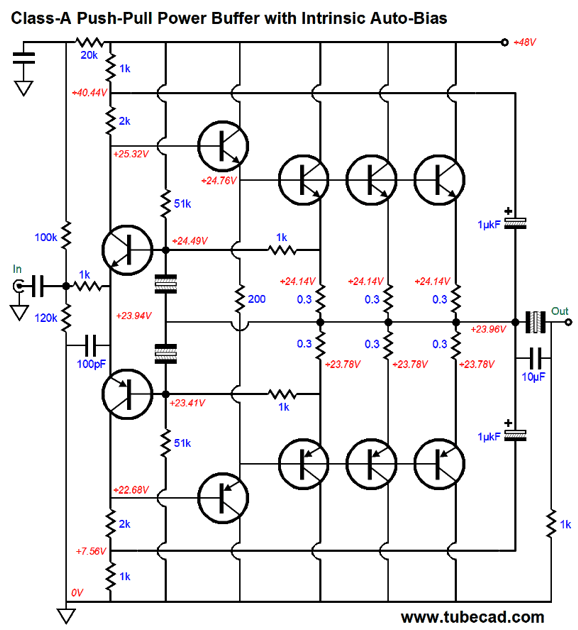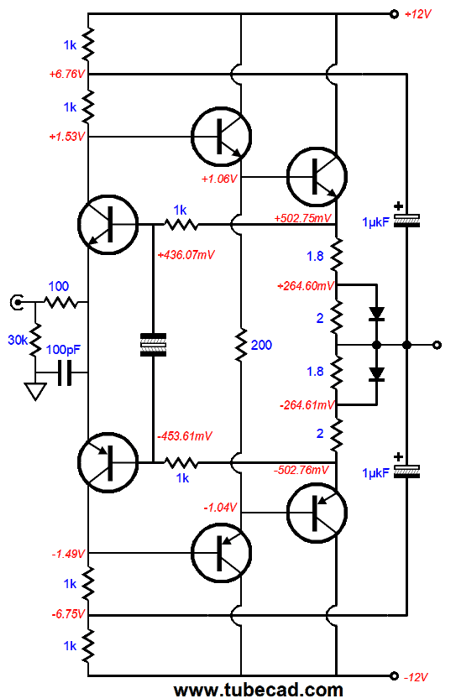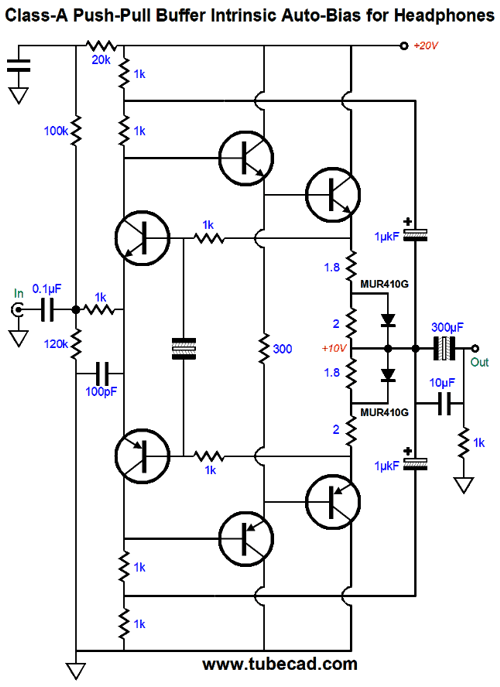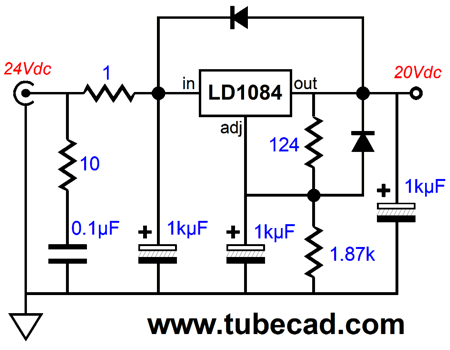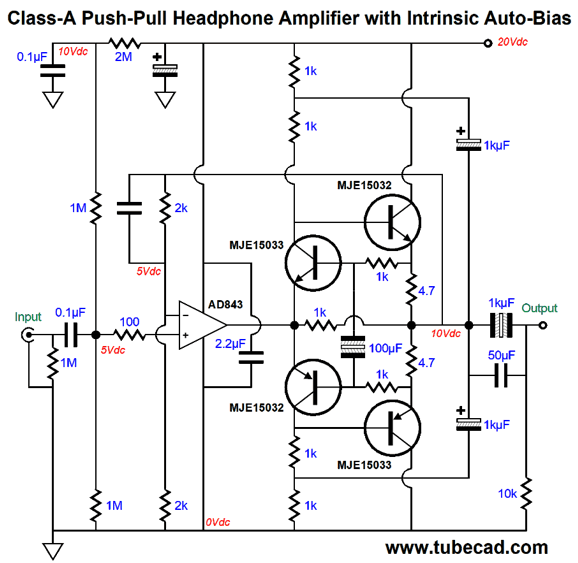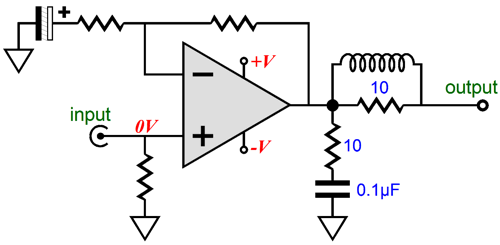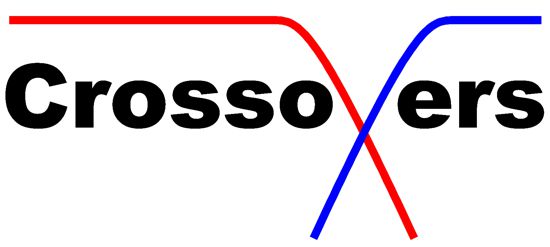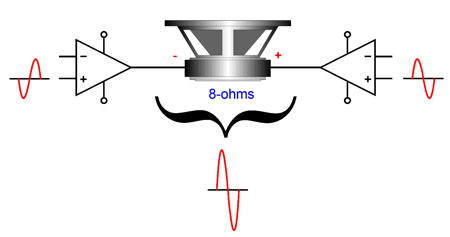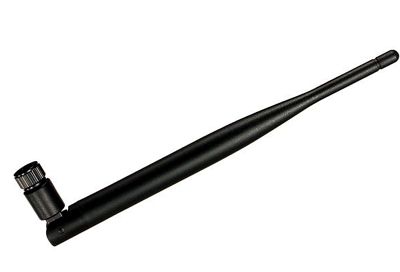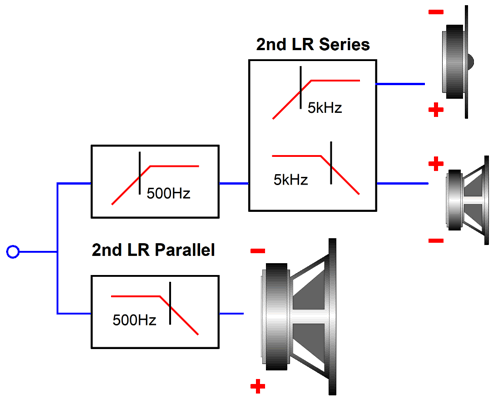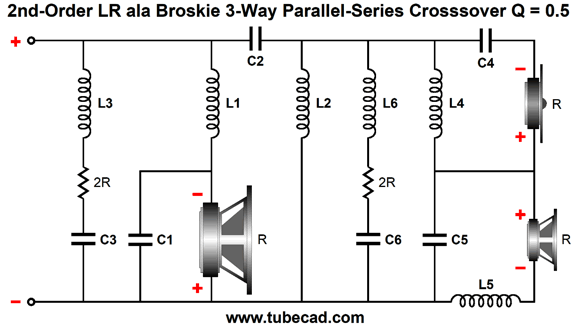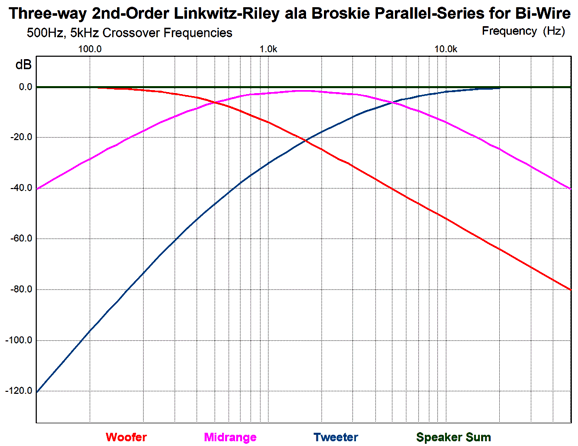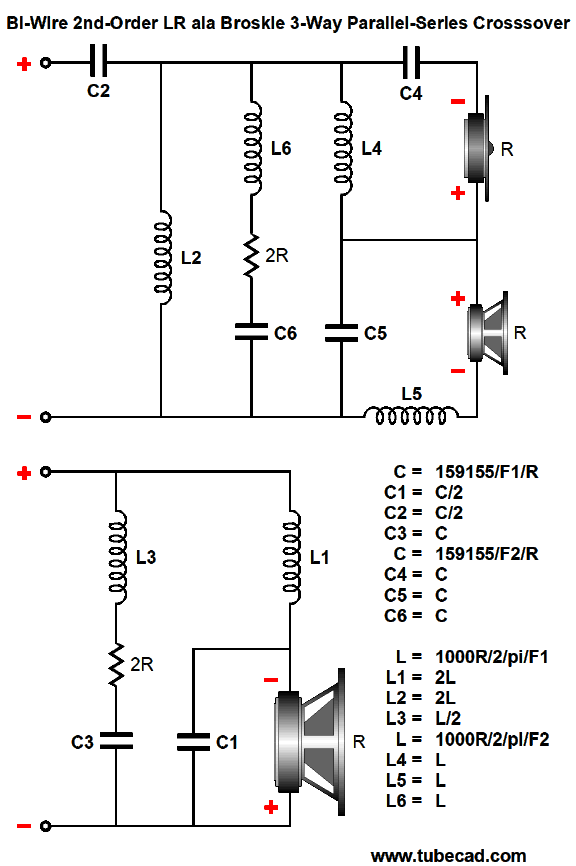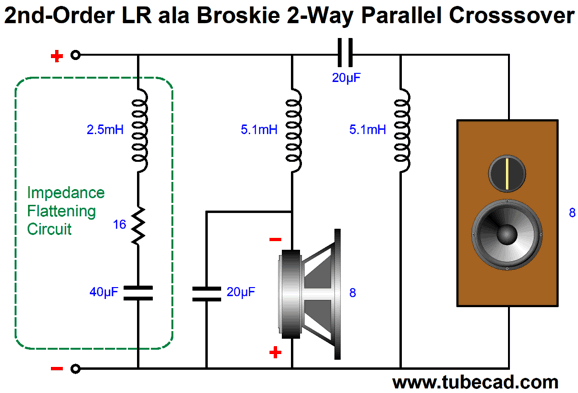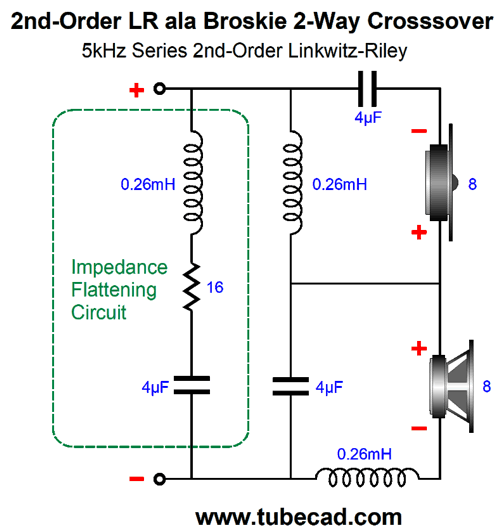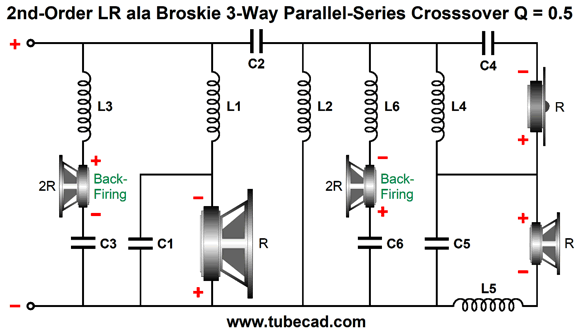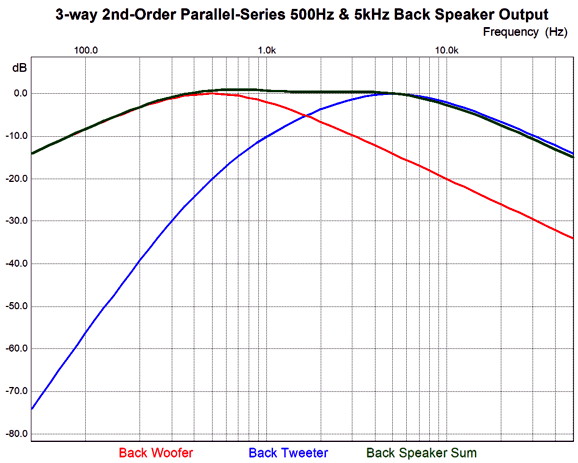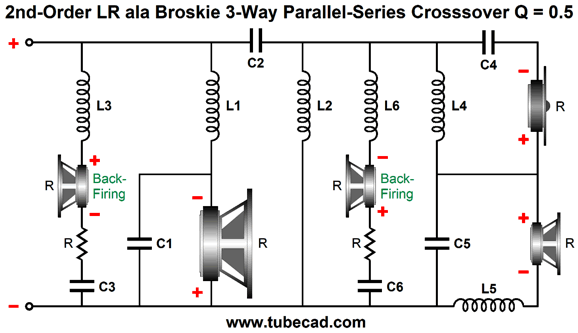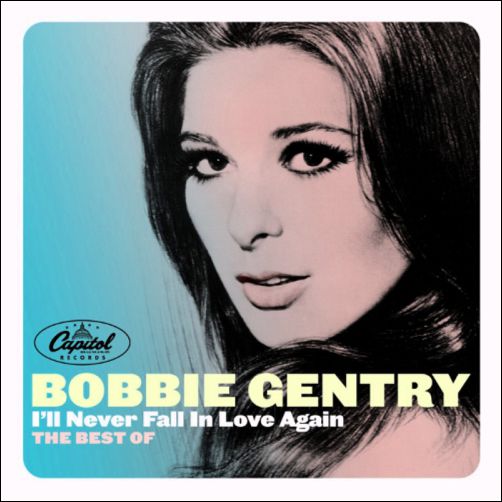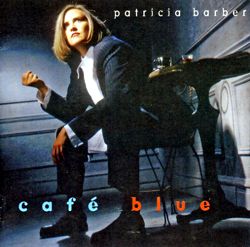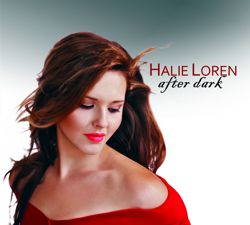| John Broskie's Guide to Tube Circuit Analysis & Design |
26 September 2019 Post Number 478
In the News
Historian? I remember Chris Paul saying something along those lines as well. Okay, I will accept that title, although I see myself as being far more of a futurist, as I create circuits that don't presently exist, but will become commonplace 20 years from now. By the way, my favorite quote from Schiit Audio's Jason Stoddard is:
Okay, but with my historian hat firmly resting atop my head, I must point out that the time-line is wrong. I have been worrying about gm-doubling for decades. I met Bob Cordell in 2011, the same year he published his book. But in January 2001, I wrote about the problem of gm-doubling in OTL class-AB amplifiers. Indeed, I made a fine analogy using a road's surface:
The circuit I came up with in 2001 was a tube-based output stage that ran in single-ended class-A and then transitioned into class-AB, much like the class-XD that Cambridge Audio would invent five years later. Then in 2009, two years before meeting Bob, in post 177, I brought up again the problem of gm-doubling and offered a remedy, class-AB-C. Bob and I have talked about gm-doubling—a lot—but I started the conversation by giving Bob a printout of my 2009 post on the topic. Still, I am just glad that the problem of gm-doubling is getting the attention it deserves.
POST
RMAF Afterthoughts
The day before, I was told the oft repeated observation that the only Lamborghini and Ferrari cars parked outside belong to the owners of audio-cable companies. And I know that I get the same foreboding feeling entering a cable exhibitor's room as I get when entering an upscale jewelry store. At the same time, I have made many experimental cables and interconnects; in fact, one of my designs is being sold for $$$ by someone else, without me getting either a percentage or credit. If forced to state my opinion, it would be that our present setup of unbalanced RCA jacks and plugs is fundamentally flawed, and that no amount of special wire or fancy sheathing can undo the essentially screwed-up situation; and if I am anti anything it is anti super-expensive audio gear, which includes wire. This puts me in an irksome position, as I heard an amazing demo of the new Danacable $3,500 Lazuli Nirvana headphone cables.
I have met Dana Robbins, the fellow behind Danacables, many times before; we even ate dinner together once. He is an accomplished electronic engineer and he knows how to use an oscilloscope. He had me listen to fine HifiMan headphones with their stock cables. Not bad sounding. We switched cables. Dang, the difference was not subtle. The fancy cable sounded as if we had switched from a solid-state amplifier to a fine tube amplifier. Undeniably better. Smoother, more relaxed, less strained, more fluid and less mechanical, dare I say it, more like reality. The Danacable Lazuli Nirvana headphone cables do work, amazingly so. Now, if they only cost $350, I would heartedly tell anyone who asked to buy them immediately. In their price tag, however, the decimal point falls one place to the right. Wouldn't it be better to buy headphones that cost $3,500 more than you had planned? In other words, wouldn't $4,000 headphones make a bigger sonic difference over $500 headphones—even $500 headphones with $3,500 cables? I am sure they would. But here is the problem: wouldn't those $4,000 headphones sound even more fabulous with the $3,500 cables? I bet they would. My conclusion is: if you don't have the money, don't even think about expensive headphone cables. In contrast, if you have the cash and you seek the finest headphone experience possible, then the Danacable Lazuli Nirvana headphone cables must be part of the setup. This experience reminds me of a similar event over a decade ago, although at the time I didn't give it much thought. A buddy of mine listened to my new Sennheiser HD650 headphones and fell in love with them, so much so that he rushed out to buy a pair. He called me a few days later and complained that his HD650s didn't sound as good as mine. I explained that his headphones might need more time to break in, as you could actually measure a drop in the resonant frequency after a week or two of constant use. He called again in few weeks with the same complaint. (By the way, he was a professional musician and tuned pianos as a side gig; he also had worked as a recording engineer. His ears were as sharp as a Japanese knife.) Do not think that I was running a tube headphone amplifier and he was running a solid-state amplifier, which would explain the difference, as we used only his gear, his portable DSD recorder and his battery-powered solid-state headphone amplifier, to listen to my headphones. During the call, he did ask why my headphone cables were blue, while his were black. I explained that mine were Cardas cable upgrades, a gift from a friend and something I didn't even consider a possible explanation of the sonic difference. (I had complained that the stock cables were too short, which my friend sought to remedy. Sadly, upon getting my gift, I gave away the original Sennheiser cables to another friend, so I could not perform a shootout, which might have proved interesting.) Well, he ended up buying the same Cardas headphone cables and he never complained again—well, at least never to me.
Class-A It's true that class-A amplifiers are massive and expensive, the result of huge power transformers and beefy heatsinks, but their actual circuitry is often simpler than their class-AB cousins. Why? The rich idle current flow, which allows for easy auto-biasing. In contrast, solid-state class-B and class-AB output stages require elaborate and finicky electronic sensing of the heatsink temperature, as the output transistors experience wide base-to-emitter voltage shifts with added heat, so maintaining an optimal and constant idle current is much like trying to catch a wild squirrel that ran into your house. Output tubes are easier to set to the desired idle current, as the tubes are not as heat sensitive and offer far less transconductance, so minor bias voltage deviations to not create wild current flows. In fact, tubes offer the additional advantage in auto-bias schemes that when the auto-bias fails, it usually still works in our favor. Check out post 390 and post 128, wherein I describe the old and justly famous Brook amplifier.
Also be sure to read the PDF I made of the original article on the amplifier's design. Its auto-bias circuit forces a surprisingly heavy idle current, at startup and while no music plays. The extra rich class-AB creates wasted heat, but also more class-A sound. As the music plays to loud crescendos, the amplifier's auto-bias circuit forces the negative-bias voltage downward, shifting the output stage idle current away from class-A and towards class-B, producing both more distortion and more output power.
Well, 99.9% of the new IC-based auto-bias circuits used in today's tube amplifiers have unknowingly reinvented the Brook amplifier method. Either a constant-current source (usually made up from a three-pin voltage regulator IC) bypassed by a large capacitor is used with each output tube cathode to set an auto cathode bias voltage or an OpAmp-based DC servo is used to monitor the small voltage drop across a small-valued cathode resistor on each output tube and adjust the grid bias voltage to set the desired idle current. Both designs suffer from the charging up of their internal AC shunting capacitors and end up dropping the idle current as a result. But as both designs end up bottoming out, the output stage never shuts off completely, but does operate in a lean idle current mode. In other words, a happy accident. Check out post 43 for more details on simple auto-bias circuits for tubes.
In solid-state output stages, on the other hand, the current swings are vastly larger. A class-AB output stage might idle at 100mA, but swing 8A peaks, an eighty-fold increase, creating huge instantaneous increases in the output device die temperature and slow, lagging increases in heatsink temperature, causing the bias circuitry to respond only after the fact. In contrast, a push-pull class-A solid-state output stage will idle at half the peak output current flow. In other words, only a twofold increase in current flow, which can result in the heatsink temperature remaining the same or even falling, as power is delivered into the loudspeaker. Also note that the twofold increase in current flow results in a nice math trick. As one of the output devices in the push-pull class-A solid-state output stage goes from zero current to twice the idle current, the average current flow will equal the idle current flow, as (0 + 2)/2 = 1. In other words, an OpAmp-based DC servo will not see its internal AC filtering capacitor charge up. In short, class-A lends itself to easy auto-bias. Okay, let's get to a design example that does not use an OpAmp-based DC servo; instead, it uses the two input transistors to monitor the idle current flow.
This circuit is not an amplifier, but a power buffer that offers no signal voltage gain, only current gain, lots of it. This is a push-pull class-A circuit, wherein the MJE15032 and MJE15033 input and driver transistors control the six output transistors, both their idle current and current swings. Each output transistor gets its own emitter 0.3-ohm resistor to prevent current hogging, wherein one output transistor's drawing too much current would result in the positive feedback loop of it drawing more current and more current until it burns up. With the emitter resistors in place, any aberrant increase in current flow in one transistor would prompt an increase in its emitter resistor voltage drop, which would provide negative feedback to any further current increase by reducing its emitter-to-base voltage. The 48V B+ voltage, which could come from a 48V switcher power supply, limits the maximum output voltage swing to about 20Vpk, which translates into 25W into 8-ohms. The total idle current is set to a rich 1.75A, so each output transistor dissipates 7W of heat at idle. Since the 1.5A idle current implies a peak current swing of 3.5A, which further implies 49W into an 8-ohm load, as W = I²Rload/2. So where did the missing 29W go? It didn't go anywhere. First of all the 48V power-supply voltage will not support 3.5A against 8 ohms, or 28Vpk. The extra rich bias current is there in reserve when the load impedance drops below the nominal 8-ohm load. Moving on to something less powerful, delivering one watt into 32-ohm headphones requires a much lower peak current swing, only 250mA. A peak current swing of 0.25A against 32 ohms equals a peak voltage swing of 8Vpk. We can scale down the previous unity-gain power buffer.
I found this design I made long ago in a folder on power buffers for driving headphones. We can convert it to monopolar power supply.
The raw 24V B+ voltage can be further reduced to 20Vdc with a simple voltage regulator circuit.
The assumption here is that a 24V switcher wallwart delivers the raw 24Vdc, which the LD1084 then regulates down to 20Vdc. The 1-ohm resistor is part of an RC pre-filter. By the way, over the last three decades, I have discovered that adding an RC pre-filter is essential, as it quickly sidesteps many regulator headaches and dramatically improves the regulator's performance, as it scrubs away the harsh edges of the incoming ripple. Here is an analogy, which is easier to chew steak or ground beef? This class-A power buffer could be added to an existing line-stage amplifier or DAC output so that low-impedance headphones could be driven. (Most modern DACs put out a truly hot output signal, as much as 6Vpk, with 2Vpk being common.) For most headphones, 2Vpk is plenty; for example, the old iPods put out 1Vpk. Many of the new planer headphones, however, require far more voltage and current, at least double. The solution is to make an amplifier, not a unity-gain buffer.
Here we see the same push-pull class-A output stage that auto biases itself with an OpAmp driver stage. The OpAmp controls the output stage and a DC global negative feedback loop lets the OpAmp know both what the output looks like and what the DC output voltage is. Note how the OpAmp's non-inverting input sees 5Vdc and the output stage centers at 10Vdc, with the negative feedback loop presenting 5Vdc to the OpAmp's inverting input. Once again, the assumption here is that a 24V switcher wallwart delivers 24Vdc to an LD1084 voltage regulator, which in turn delivers a clean 20Vdc to the headphone amplifier. The AD843 is an old Analog Devices FET OpAmp that sounds pretty good (and I have a bunch of them). No doubt newer, fancier OpAmps are available. In all these design examples, an output coupling capacitor was used. Is this a big problem? I certainly don't think so, but many do. My view is that the power supply reservoir capacitors are also "in" the signal path, but we seldom give them much thought. In contrast, when you see a big output coupling capacitor, you cannot ignore it, so you go out of your way to get the best capacitor possible and bypass it with smaller, higher-quality film or oil capacitors. In addition, output coupling capacitors, like output transformers, save loudspeakers. Do you really want to DC couple your $3,000 headphones to a headphone amplifier? If your motto is "Give DC or give me nothing," then ponder this: if we use a bipolar power supply and DC couple the output to the headphones, we should still use the input coupling capacitor, otherwise any DC offset riding on the input signal will get passed on to the output. In addition, we would need to terminate the negative feedback loop with a large-valued capacitor, so the amplifier can enjoy full open-loop DC gain for its negative feedback control of the output DC offset.
Well, that big terminating capacitor is now in the signal path, just as much as it would have been at the output. In my design example, with the monopolar power supply and output coupling capacitor, that terminating capacitor was not used, as the negative feedback loop was DC terminated. The punch line (the conclusion) is that class-A is not necessarily more complicated than class-B or class-AB. (Even my constant-power class-A circuits from a few years past are relatively simple affairs.) Class-A is not cheap, but it does not have to be more intricate.
What? More Crossovers High-end inductors are also expensive; even high-quality power resistors for padding tweeters and midranges cost $11 each. On the other hand, active crossovers use inexpensive OpAmps and capacitors and resistors. In addition, digital-signal processing (DSP) chips are relatively cheap and can easily replace the usual analog active crossover, while compensating for the driver's imperfect phase and frequency response and the time delay imposed by one voice coil being out of time alignment with the other drivers. A miracle.
In fact, I can imagine the makers of loudspeaker drivers offering three versions of the same driver. The first is the exact same type they sell today, just a driver with a data sheet. The second, the same type but with each individual driver getting a serial number, which when entered at a web-address will yield that individual driver's data, its frequency response, its phase response, and, most importantly, its departures from linearity. And the third type of driver will hold its own class-D amplifier with a built-in active filter, which will all be housed in a flat-can structure attached to the end of the magnet assembly. This last type of driver would probably sport a new type of standardized four-terminal jack, something like a fat USB jack, so DC voltage and AC signal can be delivered to the active driver.
The class-D amplifiers would all be of the differential-output type (aka BTL), so no output coupling capacitor would be needed, as the balanced output would both sit at half the applied B+ voltage. Exposed jumper pins would allow us to choose the crossover frequency for a tweeter and woofer, while midranges would need two crossover frequencies. An additional series of jumpers would let us set the desired SPL. Loudspeaker building would become greatly simpler, involving fine wood-working skills and less electrical engineering. Soon enough, well established DC power-supply voltages would emerge, such as 24Vdc and 48Vdc. One result would be the elimination of the standard 4 and 8 ohm impedances, as the loudspeaker driver makers could make tweeters with 100-ohm impedances that would mate well with the 48V-powered class-D amplifiers, while woofer impedances could fall to 2 ohms, or even less. As the amplifier module would be attached to the woofer, a heat-sensing winding (made with aluminum wire) could be added to the voice-coil, so the amplifier could automatically go into shut-down mode if the driver neared burn out. In other words, a 6-inch woofer could sport a 400W class-D amplifier and yet be safe from damage, but still enjoy phenomenal dynamics. In addition each year DACs get better and better and WiFi streaming is no longer the fussy mess it was ten years ago. In other words, a modern active loudspeaker can just plug into the wall socket and the digital signal can be streamed to the speaker through Wifi, where the internal DAC and DSP and class-D amplifiers can deliver to each driver its needed signal. Look Ma, no wires. No wires—that is a dream we can all share. No more $22,000 loudspeaker cables and funny cable lifting structures; no risk of tripping on fat cables and shorting out your power amplifier; just one power cord per speaker; that's it. What will makers of high-end loudspeaker cables do? They will switch to making solid platinum WiFi antennas, which will sell for a mere $20,000.
We might even see active loudspeakers that hold tube power amplifiers. In fact, I listened to a three-way active loudspeaker at the 2005 CES that held three 300B-based power amplifiers. For the present, however, passive crossovers are needed. Recently, I was looking over post 403, which held many examples of Linkwitz-Riley arranged in a series fashion. One problem with series crossovers is that we can no longer bi-wire, as all the drivers and crossover parts form a ladder that cannot be broken. Still, I would like to give the woofer its own speaker cable, as this cable is the one that will experience the biggest current flows.
One workaround would be to use a series crossover for the midrange and tweeter, but a parallel crossover between woofer and the series crossover.
This setup still results in a tweeter cascade, wherein the tweeter initially sees a 2nd-order crossover slope at its 5kHz crossover and then a 4th-order slope at 500Hz, the crossover frequency between the woofer and the midrange.
Converting this crossover to a bi-wire setup is easy.
The formulas for finding the capacitor and inductor values are simple, as is the procedure. First we start with the 500Hz crossover frequency, F1; then after we have found C1, C2, and C3's values, we use F2, the 5kHz crossover frequency to find the values for C4,C5, and C6; then we do the same for finding the inductor values. The capacitor values are in µF and the inductor values are in mH. Okay, let's do the math and show the values for the 500hz crossover frequency.
Now the series crossover at 5kHz.
Note how the parallel and series values follow different ratios. Since 5kHz is tenfold higher than 500Hz, we would normally expect capacitor C4's value to be one tenth of capacitor C2's value; it isn't; it's five times less. On the other hand, the series crossover inductor values are half of what we might expect. Okay, so far nothing really new has been shown. Well, as I looked that this crossover arrangement for bi-wire, I wondered about the two impedance-flattening circuits that I added to make the crossover an ala Broskie design. Without these added networks, the loudspeaker impedance would double at 500Hz and 5kHz; with them in place, it was ruler flat across the audio bandwidth. (We are ignoring the driver's own internal series inductance. In other words, we could and should still use Zobel networks.) What if we replaced the resistors in the two impedance-flattening circuits with loudspeaker drivers? We would not want to have them firing forward with the rest of the drivers, as they would just get in the way. On the other hand, if we had them placed on the rear of the loudspeaker enclosure, they would fire towards the back wall and add some in-phase ambience.
Note that the rear-firing drivers must present twice the impedance of the front firing drivers. Also note that the back high-frequency driver must be wired in inverted phase. Here is the output sum of just the two added drivers.
The rear-firing drivers almost cover the entire audio bandwidth, with cutoff frequencies of 120Hz and 12kHz, with an implicit crossover frequency between the drivers at 1,660Hz. The high-frequency drivers sees a 2nd-order slope at low frequencies and a 1st-order slope at high frequencies, while the low-frequency driver sees 1st-order slopes throughout. The sum sees a small 0.5dB hump centered at 670 Hz. This means that the frequency-based diffraction loss would be at least partially compensated. In addition, it means that the reflected sound would more closely match the direct sound in frequency content, which is a feature of the best-sounding loudspeakers, a fact revealed by many actual experiments performed by acoustic researchers. If our goal is a 4-ohm speaker, then finding rear-firing 8-ohm drivers will present no problems. Since finding 16-ohm drivers is not as easy as finding 8-ohm drivers, however, we can use 8-ohm drivers with series 8-ohm resistors in a speaker with an impedance of 8 ohms.
The rear-firing drivers will be down by -6dB, but that is only relative to what they would put out without the resistors. It's possible that a 16-ohm driver would also be -6D down compared to a comparable 8-ohm version of the driver. Moreover, who knows what the optimal amount of rear-firing output is. We might need less or more. By the way, I must point out that no Linkwitz-Riley crossover will deliver phase-flat output, only frequency-flat output; and this crossover is no exception. On the other hand, this crossover offers both a flat frequency response and impedance plot. Moreover, it offers great protection to the tweeter and the rear-firing drivers might add a fuller, more natural sound.
Music Recommendation: Ode To Billy Joe In other words, the singer must resist the urge to emote effusively. Larry recommend Patricia Barber's cover of the song. This surprised me, as I know and like Ms. Barber a great deal and own at least three of her albums, but I didn't know she had covered this song. She has and it is a fine effort. In fact, the entire 1996 album, Cafe Blue, is excellent.
A more recent cover (2010) that certainly passes the audiophile test-music test is by Halie Loren on her After Dark album. Like Barber, her's is far more of a jazz take on the song, although she does sings in a Southern voice, but she does resist overstating emotional agitation by backing off just when you are sure she is going to emote with gusto.
Once again, Tidal offers all three albums. //JRB
User Guides for GlassWare Software
For those of you who still have old computers running Windows XP (32-bit) or any other Windows 32-bit OS, I have setup the download availability of my old old standards: Tube CAD, SE Amp CAD, and Audio Gadgets. The downloads are at the GlassWare-Yahoo store and the price is only $9.95 for each program. http://glass-ware.stores.yahoo.net/adsoffromgla.html So many have asked that I had to do it. WARNING: THESE THREE PROGRAMS WILL NOT RUN UNDER VISTA 64-Bit or WINDOWS 7 & 8 or any other 64-bit OS. I do plan on remaking all of these programs into 64-bit versions, but it will be a huge ordeal, as programming requires vast chunks of noise-free time, something very rare with children running about. Ideally, I would love to come out with versions that run on iPads and Android-OS tablets.
|
John Gives
Special Thanks to the Special 85
I am truly stunned and appreciative of their support. In addition I want to thank the following patrons:
All of your support makes a big difference. I would love to arrive at the point where creating my posts was my top priority of the day, not something that I have to steal time from other obligations to do. The more support I get, the higher up these posts move up in deserving attention. If you have been reading my posts, you know that my lifetime goal is reaching post number one thousand. I have 522 more to go. My second goal is to gather 1,000 patrons. I have 915 patrons to go. Help me get there.
Support the Tube CAD Journal & get an extremely powerful push-pull tube-amplifier simulator for TCJ Push-Pull Calculator
TCJ PPC Version 2 Improvements Rebuilt simulation engine *User definable
Download or CD ROM For more information, please visit our Web site : To purchase, please visit our Yahoo Store: |
|||
| www.tubecad.com Copyright © 1999-2019 GlassWare All Rights Reserved |
